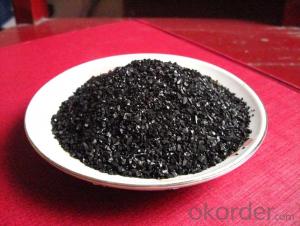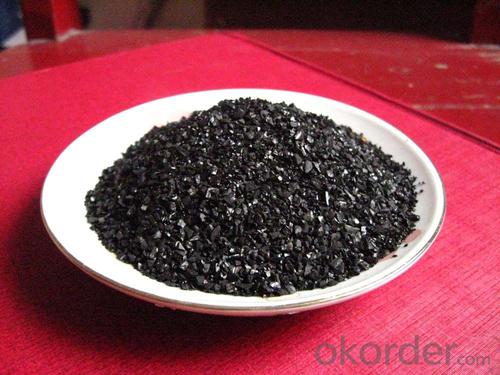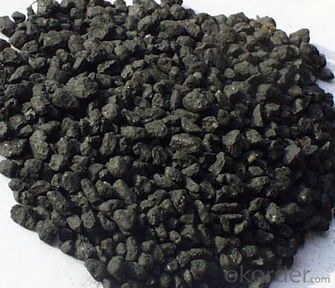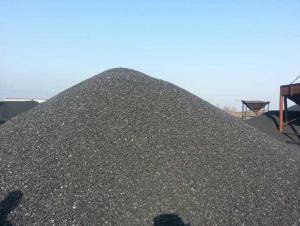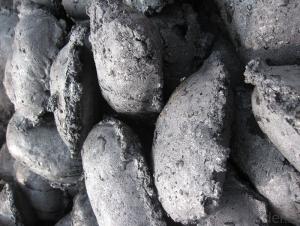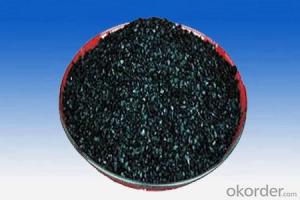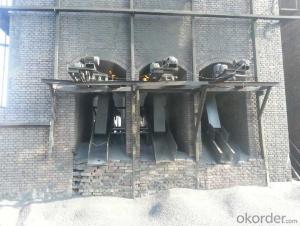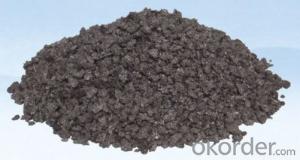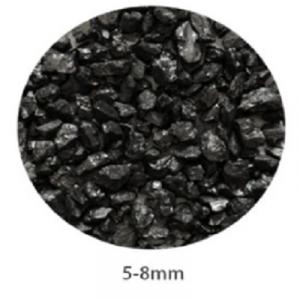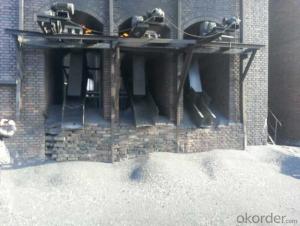FC92 Calcined Anthracite With National Standard
- Loading Port:
- Tianjin
- Payment Terms:
- TT OR LC
- Min Order Qty:
- 0 m.t.
- Supply Capability:
- 100000 m.t./month
OKorder Service Pledge
OKorder Financial Service
You Might Also Like
Packaging & Delivery
Packaging Detail: | 25kgs/50kgs/1ton per bag or as buyer's request |
Delivery Detail: | Within 20 days |
Specifications
Calcined Anthracite
Fixed carbon: 90%-95%
S: 0.5% max
Size: 0-3. 3-5.3-15 or as request
PARAMETER UNIT GUARANTEE VALUE | |||||
F.C.% | 95MIN | 94MIN | 93MIN | 92MIN | 90MIN |
ASH % | 4MAX | 5MAX | 6MAX | 7MAX | 8MAX |
V.M.% | 1 MAX | 1MAX | 1.5MAX | 1.5MAX | 1.5MAX |
SULFUR % | 0.5MAX | 0.5MAX | 0.5MAX | 0.5MAX | 0.5MAX |
MOISTURE % | 0.5MAX | 0.5MAX | 0.5MAX | 0.5MAX | 0.5MAX |
Feature
All of our goods are made in the best quality of world famous Tianjin. All of our products are with High carbon, Low ash, low sulphur, Low Moisture.
Usage
The Calcined Anthracite Coal/Gas Calcined Anthracite Coal/Carbon Raiser is mainly used in steelmaking in electrical stove, screening water, shipbuilding sandblast to remove rust. It can reduce the cost of steelmaking effectively by replacing the traditional petroleum coke of carburant.Also can improve the Carbon content in steel-melting and Ductile iron foundry.
Size can be adjusted based on buyer's request.
Pictures of Calcined Anthracite
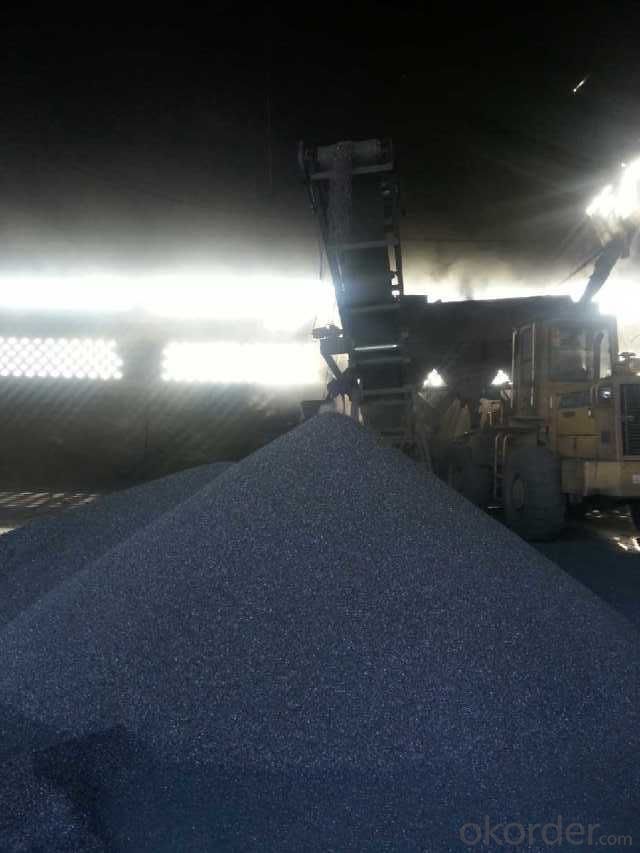
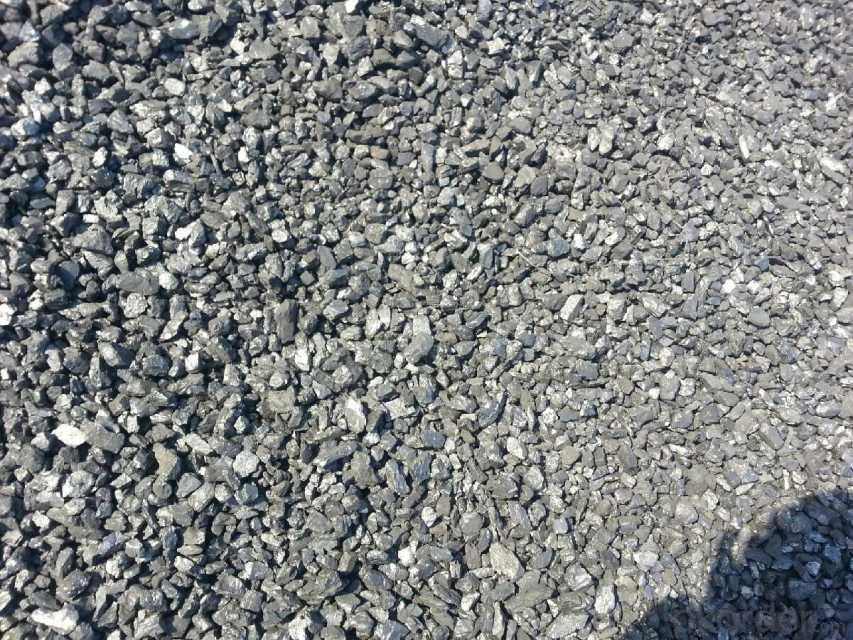
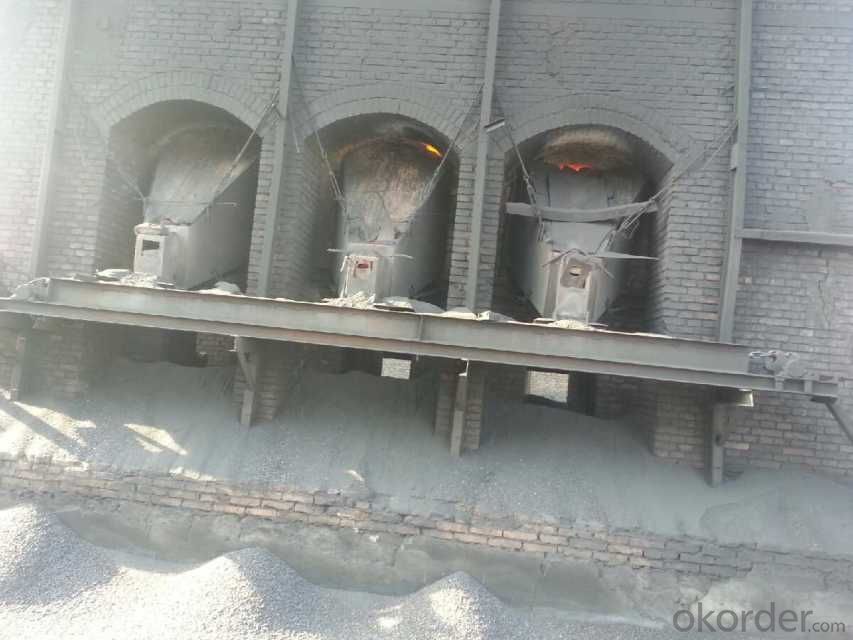
- Q: How does carbon cycle through living organisms?
- The carbon cycle through living organisms involves various processes. It begins with plants absorbing carbon dioxide from the atmosphere through photosynthesis, converting it into organic compounds. These plants are then consumed by herbivores, transferring the carbon to the animal's body. When herbivores are consumed by carnivores, the carbon is transferred again. Eventually, through respiration, carbon is released back into the atmosphere as carbon dioxide. Decomposers break down dead organisms, releasing carbon back into the soil, where it can be used by plants once again. This continuous cycle ensures the flow of carbon through different living organisms.
- Q: What are the health effects of carbon pollution?
- The health impacts of carbon pollution, specifically carbon dioxide (CO2) emissions, are wide-ranging and affect both humans and the environment. The primary concern regarding carbon pollution is its contribution to climate change. Because CO2 is a greenhouse gas, it traps heat in the Earth's atmosphere. This leads to global warming and alters weather patterns. As a result, heatwaves, hurricanes, and other extreme weather events become more frequent and severe. These events have direct and indirect effects on health, including heat-related illnesses, injuries, displacement, and the spread of infectious diseases. Furthermore, carbon pollution is closely connected to air pollution, which has significant health consequences. Burning fossil fuels like coal and oil not only releases CO2 but also toxic air pollutants such as sulfur dioxide, nitrogen oxides, particulate matter, and volatile organic compounds. These pollutants can cause respiratory problems like asthma, bronchitis, and other chronic obstructive pulmonary diseases (COPD). They can also trigger cardiovascular issues, increasing the risk of heart attacks and strokes. The health impacts of carbon pollution are not limited to the respiratory and cardiovascular systems. Increased temperatures and changes in precipitation patterns can also affect water and food supplies. This can lead to waterborne diseases, reduced crop yields, malnutrition, and food insecurity. Moreover, carbon pollution has environmental consequences that further worsen health risks. Deforestation reduces clean air availability and the natural carbon sinks that absorb CO2. Ocean acidification damages marine ecosystems, affecting the availability of fish and other seafood, which are essential sources of nutrition for many communities. To minimize the health effects of carbon pollution, it is crucial to reduce greenhouse gas emissions. This can be achieved by transitioning to cleaner and renewable energy sources, implementing energy-efficient practices, and adopting sustainable land-use and agricultural practices. Additionally, investing in healthcare systems and public health infrastructure to address the direct and indirect health impacts of carbon pollution is essential.
- Q: Power plant water treatment plant, there is a carbon removal device, the expert pointing out what the principle is it?
- The water enters from the upper part of the carbon removing device and is poured down by the water distribution equipment and enters the water tank from the lower part through the filling layer. In addition to carbon, due to the blocking effect of filler, flow down from the top of the water is dispersed into many small stocks or drop, from the bottom of the drum into the air and water contact area is very large, and the partial pressure of carbon dioxide in the air is very low, so it will come out from the water desorption carbon dioxide quickly away. Water can be removed by blowing carbon, which can reduce the carbon dioxide content to below 5mg/L. In fact, the simple point is that the amount of dissolved gas in water is proportional to the pressure of the air he touches. This principle is similar to the principle of the atmospheric Deaerator in the power plant. I hope I can help you
- Q: How does carbon affect the pH of water bodies?
- Carbon can have a significant impact on the pH of water bodies. When carbon dioxide (CO2) from the atmosphere dissolves in water, it forms carbonic acid (H2CO3). This process is known as carbonation and occurs naturally in water bodies. Carbonic acid is a weak acid and it plays a crucial role in buffering the pH of water bodies. The presence of carbonic acid in water can lower the pH, making it more acidic. This is because carbonic acid dissociates into hydrogen ions (H+) and bicarbonate ions (HCO3-). The higher the concentration of hydrogen ions, the lower the pH of the water. Therefore, carbonic acid contributes to the acidity of water bodies. Additionally, carbonic acid can undergo further dissociation to form carbonate ions (CO32-). These carbonate ions can react with hydrogen ions, effectively reducing the concentration of hydrogen ions and increasing the pH of the water. This process is called carbonation and it acts as a buffer, helping to stabilize the pH of the water. Human activities, such as burning fossil fuels and deforestation, release excessive amounts of carbon dioxide into the atmosphere. This leads to an increase in the concentration of carbonic acid in water bodies, which in turn lowers the pH. This phenomenon is known as ocean acidification and it can have detrimental effects on marine life. Decreased pH caused by excess carbon can harm aquatic organisms, especially those with calcium carbonate shells, such as corals, mollusks, and some plankton species. The more acidic water dissolves their shells, making them more vulnerable to predation and reducing their ability to build and maintain their protective structures. In conclusion, carbon can significantly affect the pH of water bodies through the formation of carbonic acid. While carbonic acid contributes to the acidity of water, it also acts as a buffer, helping to stabilize the pH. However, excessive carbon dioxide emissions from human activities can lead to ocean acidification, impacting marine life and the overall health of water ecosystems.
- Q: What is the role of carbon in the formation of coal, oil, and natural gas?
- Carbon plays a crucial role in the formation of coal, oil, and natural gas. These fossil fuels are primarily composed of carbon, along with varying amounts of hydrogen, sulfur, nitrogen, and other elements. The formation of these fuels begins with the accumulation of organic matter, such as dead plants and marine organisms, in environments with limited oxygen. Over millions of years, the organic matter is subjected to intense heat and pressure, causing a process known as carbonization. During carbonization, the carbon in the organic matter undergoes chemical changes, transforming it into solid, liquid, or gaseous hydrocarbon compounds. The specific conditions under which carbonization occurs determine the type of fossil fuel that will be formed. In the case of coal, the organic matter is primarily land-based plant material. Under high pressure and temperature, carbonization converts this plant material into solid coal. The longer and more intense the carbonization process, the higher the carbon content in the resulting coal. Different types of coal, such as lignite, bituminous, and anthracite, have varying carbon content and energy density. Oil, on the other hand, is formed from marine organisms like plankton and algae. As these organisms die, they sink to the bottom of oceans or lakes and are gradually buried under sediment layers. Over time, the heat and pressure cause carbonization, transforming the organic matter into a liquid hydrocarbon mixture known as crude oil. This oil can then be further processed into various petroleum products. Natural gas is primarily composed of methane (CH4) and is formed in similar conditions as oil. However, the carbonization process occurs at higher temperatures and pressures, causing the organic matter to break down into gaseous hydrocarbon compounds. Natural gas can be found alongside oil deposits or trapped in underground rock formations, such as shale or sandstone. Therefore, carbon is the fundamental building block of coal, oil, and natural gas. Its presence in organic matter, combined with the right conditions of heat, pressure, and time, leads to the formation of these valuable energy resources that play a significant role in powering our modern world.
- Q: How does carbon impact the prevalence of droughts?
- Droughts are significantly influenced by carbon, specifically in the form of carbon dioxide (CO2) emissions. The prevalence of droughts is attributed to the increased levels of carbon in the atmosphere, which contribute to global warming and impact climate patterns globally. Human activities, such as the burning of fossil fuels and deforestation, release carbon dioxide into the atmosphere. This carbon dioxide acts as a greenhouse gas, trapping heat from the sun and causing the Earth's temperature to rise. As the global temperature increases, precipitation patterns and evaporation rates undergo changes. Warmer temperatures accelerate evaporation, leading to more water evaporating from lakes, rivers, and soil. This increased evaporation, combined with altered precipitation patterns, results in drier conditions and reduced water availability in certain regions. Furthermore, the rising temperatures contribute to the intensification of the water cycle, leading to more extreme weather events. These events include more frequent and severe droughts, as well as intense rainfall in some areas, increasing the risk of floods. Moreover, carbon emissions also impact atmospheric circulation patterns, such as the weakening of the jet stream. The jet stream plays a crucial role in directing weather systems across the globe, including rain-bearing weather fronts. When it weakens, weather systems become stagnant, resulting in prolonged drought periods in certain regions. In summary, human activities that increase carbon levels in the atmosphere have a direct influence on global warming and climate change. These changes in climate patterns and atmospheric circulation, along with the intensification of the water cycle, significantly affect the occurrence and severity of droughts worldwide. Therefore, it is essential to reduce carbon emissions and address climate change in order to minimize the impacts of droughts on ecosystems, agriculture, and human populations.
- Q: How is carbon used in the production of carbon nanowires?
- Carbon's unique properties make it a key component in the production of carbon nanowires. These nanowires are typically created through a process called chemical vapor deposition (CVD), in which a carbon-containing precursor gas is decomposed in a high-temperature environment. To carry out this process, a reaction chamber is utilized, where a carbon source like methane or ethylene is introduced. The precursor gas is then heated to a temperature above 600 degrees Celsius, causing it to decompose. This results in the release of carbon atoms that begin to deposit on a substrate material, such as a silicon wafer or metal catalyst. The carbon atoms in the precursor gas tend to form strong covalent bonds with each other, leading to the formation of a graphite-like structure. However, by carefully controlling the growth conditions, including temperature and pressure, the deposited carbon atoms can be arranged in a highly ordered manner to form nanowires. The use of carbon as the fundamental building block for nanowires offers several advantages, including exceptional thermal and electrical conductivity, as well as high mechanical strength. These properties enable carbon nanowires to exhibit unique characteristics, making them suitable for a wide range of applications, such as electronics, energy storage, and sensors. Overall, carbon plays a crucial role in the production of carbon nanowires as the raw material that undergoes decomposition and subsequent rearrangement to achieve the desired nanoscale structures.
- Q: What are the effects of carbon emissions on animal populations?
- Carbon emissions have profound effects on animal populations. One of the main consequences is the disruption of ecosystems and the loss of habitats. As carbon dioxide levels rise in the atmosphere, the Earth's temperature increases, leading to climate change. This change in climate can alter the availability of resources such as food and water, making it more difficult for animals to survive and reproduce. Additionally, carbon emissions contribute to ocean acidification. When carbon dioxide is absorbed by seawater, it reacts with water to form carbonic acid, which lowers the pH of the ocean. This acidification has detrimental effects on marine life, especially on species that rely on calcium carbonate to build their shells or skeletons, such as corals and shellfish. As their habitats become more corrosive, these animals struggle to survive and reproduce, leading to significant declines in their populations. Furthermore, carbon emissions are often associated with air pollution, which has direct and indirect impacts on animal populations. High levels of air pollution, specifically from pollutants like nitrogen dioxide and particulate matter, can cause respiratory problems and other health issues in animals. This can lead to reduced fitness and increased mortality rates, ultimately affecting the overall population size. Lastly, carbon emissions contribute to deforestation and habitat destruction. As more land is cleared for human activities like agriculture or urbanization, animal populations lose their natural habitats and are forced to adapt to fragmented landscapes. This fragmentation restricts their movement, limits access to resources, and increases their vulnerability to predation and other threats. In conclusion, carbon emissions have far-reaching effects on animal populations, including habitat loss, climate change, ocean acidification, air pollution, and deforestation. These impacts disrupt ecosystems and threaten the survival of many animal species. It is crucial to address carbon emissions and reduce our carbon footprint to mitigate these detrimental effects and protect the diversity of life on Earth.
- Q: How does carbon dioxide affect the Earth's atmosphere?
- Carbon dioxide affects the Earth's atmosphere by trapping heat from the sun, leading to the greenhouse effect and causing global warming and climate change.
- Q: What are the meanings of carbon, graphite, burr, two cuts and four cuts in steel?.
- Flash is to flash, or two bending. Two cuts; one cut two on average, three segments, four cuts; an average cut of four, and five segments. The back is industry talk.
Send your message to us
FC92 Calcined Anthracite With National Standard
- Loading Port:
- Tianjin
- Payment Terms:
- TT OR LC
- Min Order Qty:
- 0 m.t.
- Supply Capability:
- 100000 m.t./month
OKorder Service Pledge
OKorder Financial Service
Similar products
Hot products
Hot Searches
